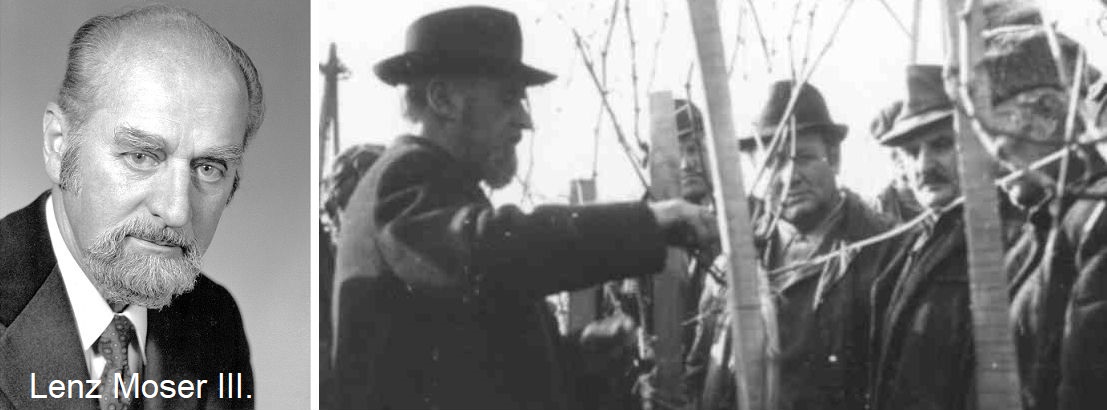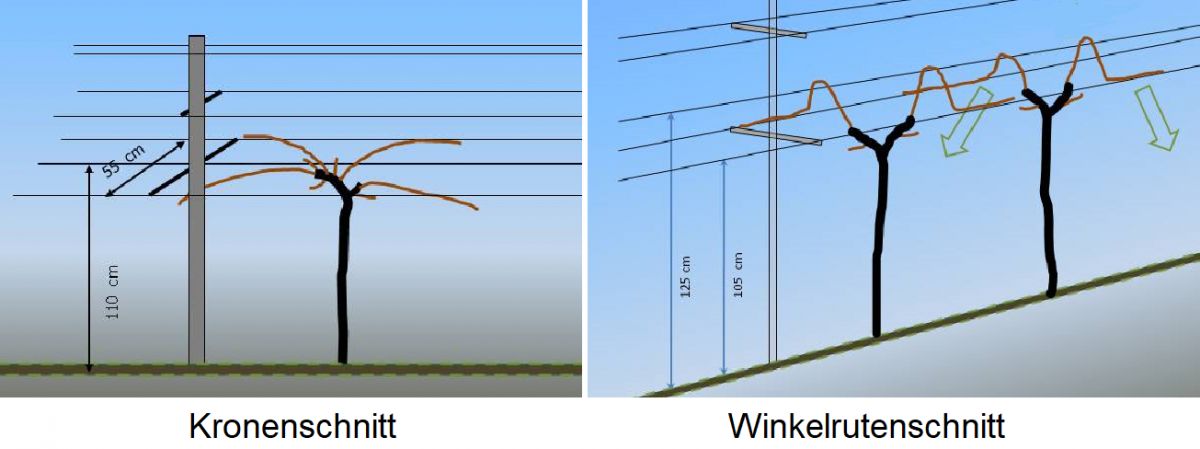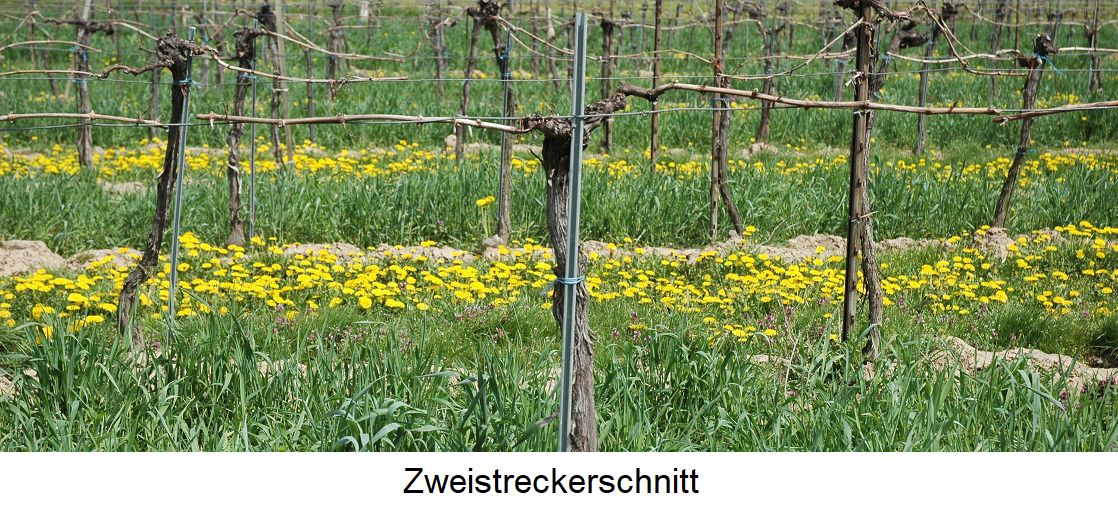This high education system was developed in Austria by the winery owner Laurenz (Lenz) Moser III (1905-1978) in the 1930s at his own winery in Rohrendorf im Kremstal(Lower Austria). After study trips to European wine-growing regions, he took over the then family winery in 1929. Today it no longer belongs to the Lenz Moser family, but operates under the name Lenz Moser AG. From the end of the 1920s, Moser undertook experiments with a wide-row system supported by wire frames, which he called high culture and which is also referred to as "Moser culture" after him. From 1936 onwards, this was used exclusively on his own farm. After a severe winter frost in 1956 (against which the system offers protection), the high culture was finally able to establish itself. It is used on 90% of Austria's vineyards as well as in many wine-growing regions worldwide. Out of gratitude, a monument was erected to Lenz Mosser in Rohrendorf in 980 by the Austrian winegrowers. The picture on the right shows Moser demonstrating pruning.

Application & Shapes
The vines were planted at relatively wide distances of 3.00 to 3.30 metres (1 vine 3 to 4 m² = about 3,000 vines/ha) and trained 1.00 to 1.30 metres high on wire frames (wide-space training). Due to the lower number of vines/hectare compared to cane culture, the canes must produce a higher yield in order to achieve the same area output compared to denser planting. Each vine must develop more shoots, which also means more leaves. To ensure sufficient exposure (sunlight), the shoots were divided (1/3 on the left, 1/3 in the middle in wire pairs, 1/3 on the right). From today's point of view, however, this is a hindrance to the use of mechanical equipment such as grape harvesters and foliage trimmers. For this reason, foliage trimming is no longer practised today.

Cordon pruning
Cordon pruning, developed by Lenz Moser, is based on a one- or two-arm cordon with short stretchers and pegs (see under bows). Several variants have developed from this in practice:
Crown cut
In crown pruning with cross beams (therefore also high culture with cross yoke) and two additional tension wires, the cut fruiting wood is distributed crosswise. Due to the resulting unfavourable foliage distribution and hardly possible mechanical processing, this form is no longer important.
Angle pruning
In the similar angular pruning method, the long fruiting canes are attached at an angle by means of a bending wire. Due to similar disadvantages as with crown pruning, this form is no longer important.

Two-stretch cut(double flat bow)
In the two-stretch cut (or double flat arch), long stretchers (flat arches) are cut horizontally in both directions on the 1 to 1.30 metre high trunk and attached to the tension wire. On a trunk with a height of 1 m to 1.30 m, more or less long stretchers (flat arches) are cut in both directions on the tension wire and fastened. As a rule, a strong vine must be cut longer with the front eye downwards and a weak vine shorter with the front eye upwards. This form is an advantage for all manual work as it can be done while standing. It is very similar to trellis pruning with slightly higher stems.

Half-arch cut
In half-arch pruning, a long half-arch is cut on the 1 to 1.30 metre high trunk in one or both directions and attached to the tension wire. Compared to the two-arch cut, more eyes can be cut. In addition, the grape zone is distributed over a higher zone.
Heart pruning
With the heart pruning (was the standard form in the former Eastern Bloc), two half arches and two full arches are cut at a height of 1 metre. High yields can be achieved with these four long fruiting canes.

Further information
A complete list of all training systems can be found at vine training; all tools, work and measures in the vineyard during the vegetation cycle can be found under vineyard care.
Lenz Moser: Fotostudio Gartler, Krems an d. D., CC BY-SA 3.0, Link
Pruning: By Unknown - Weinbauschule Krems, GFDL 1.2, Link
Original form: By Bauer Karl - Own work, CC BY-SA 3.0, Link
Crowns: By Bauer Karl - Own work, CC BY-SA 3.0, Link
Angle rods: By farmer Karl - Own work, CC BY-SA 3.0, Link
Zweistrecker: By farmer Karl - Own work, CC BY 3.0, Link
Half-arch: By farmer Karl - Own work, CC BY 3.0, Link
Heart: By farmer Karl - Own work, CC BY-SA 3.0, Link
Voices of our members

In the past, you needed a wealth of encyclopaedias and specialist literature to keep up to date in your vinophile professional life. Today, Wine lexicon from wein.plus is one of my best helpers and can rightly be called the "bible of wine knowledge".
Prof. Dr. Walter Kutscher
Lehrgangsleiter Sommelierausbildung WIFI-Wien